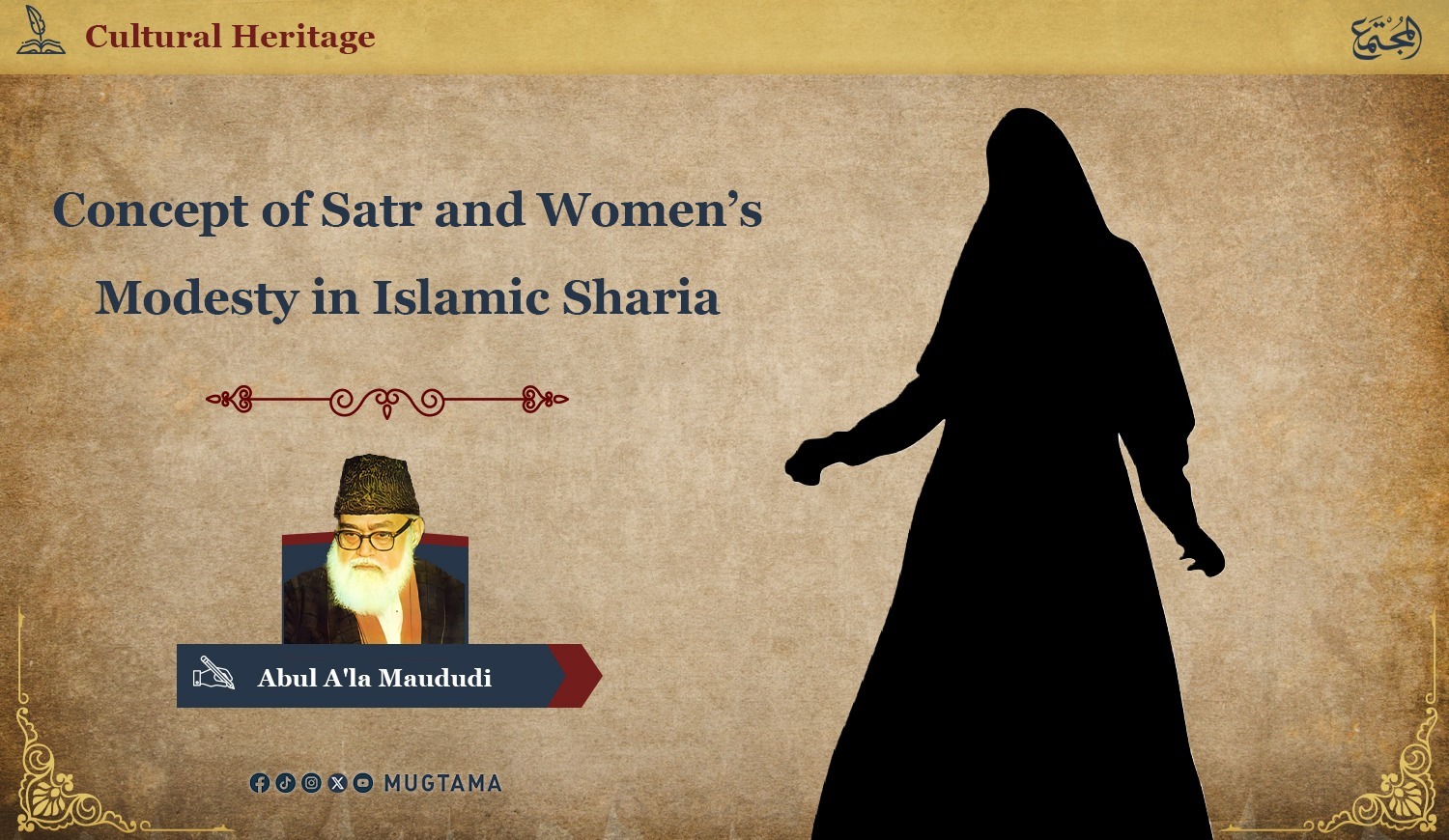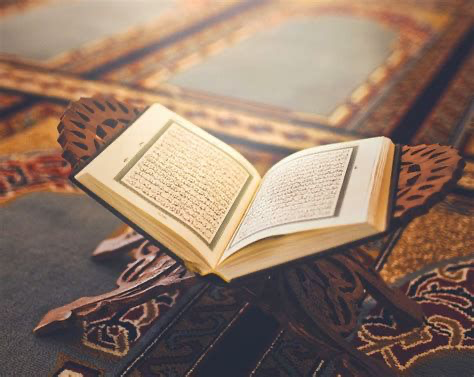Concept of Satr and Women’s Modesty in Islamic Sharia

The whole body of a woman, except the face and
the bands, is satar which she is not allowed to uncover even before her father,
uncle, brother, or son. More than that, it is not approved that a woman should
uncover her satar even before another woman. Keeping this in view, let us
consider the limits set to the display of decorations:
1. The
woman has been allowed to display her decoration before her husband, father,
father-inlaw, son, step son, brother and nephew (son of sister).
2. She has also been allowed to display her
decoration before her slaves (but not before the slaves of others).
3. She may also appear with decoration before
such men as are under her control and command and can have no evil inclinations
towards her.
4. She may also display her decoration before
such children as may not yet have developed sexual feelings, or, according to
the Qur’an “such boys as may not yet be aware of the feminine secrets”.
5. She is also permitted to appear with
decoration before the women with whom she has every day social relations.
The words used in the Qur’an imply such women
as are noble of character, or have family or blood relations, or are of equal
rank. All other women besides these who may not be well-known, or may be of
doubtful character, or notorious on account of their evil ways, are excluded
from the permissions, for contact with them can easily lead to evil results.
That is why Hazrat ‘Umar wrote to Hazrat Abu ‘Obaidah bin Al-Jarrah, Governor
of Syria, to prohibit the Muslim women from going to baths with the women of
the people of the Book. [Ibn Jarir: Commentary on V. 31 of Surah An-Nur (24)].
Hazrat Ibn ‘Abbas says, “A Muslim woman is not allowed to display herself
before the women of the unbelievers and non-Muslim tax-payers, any more than
she can display herself before the other men”. (Tafsir-i-Kabir Commentary on
v.31 of Surah An-Nur).
This did not mean to create any religious
distinction. It only aimed at safeguarding the Muslim women against the
influence of the women whose moral and cultural background was not fully known,
or if known to some extent, it was objectionable from the Islamic point of
view. However, the Muslim women have been allowed to mix freely with those non-
Muslim women who are noble of character, chaste and well mannered.
If we consider these limits carefully, we can
draw two conclusions: First, the decoration that can be displayed in this
restricted circle does not include the female satar. It means the ornaments,
decent clothing, use of collyrium and henna, hairdos and all other decorations
that women are by nature fond of showing in their houses.
Second, this kind of decoration can either be
displayed by a woman before the males for whom she is permanently unlawful, or
before those who lack sexual desire, or those who are incapable of becoming a
source of evil. That is why permission has been restricted in the case of women
to “their own women”, in the case of men to those “lacking sexual urges”, and
in the case of children to those “who are not yet aware of the feminine
secrets”. This shows that the Law-giver means to restrict the display of decoration
by women to a limited circle, so as to reduce to minimum the chances of
emotional excitement or sexual anarchy on account of the female charms and
decorations.
Experts
Warn: The Cancer of Nudity Spreads Through Fashion and Runway Shows!
Woman has been prohibited to display her
fineries before all other men, outside this circle. So much so that she is not
allowed even to stamp the ground in walking, lest her hidden decoration should
be revealed by its jingle, and thus attract attention. This decoration which
she has been commanded to conceal from the other men is the same which she has
been allowed to display in the abovementioned circle. The object is clear. That
is, if women are allowed to appear in full make-up freely before men who neither
lack sexual desires, nor are immune from sexual urges because of permanent
unlawfulness, the consequences warranted by human nature will inevitably
follow. It cannot, however, be claimed that such a display of fineries shall
turn every woman into a prostitute, nor that every man shall become an
adulterer. But, at the same time nobody can deny that if women go about in full
make-up and mix freely with men, it is likely to result in countless open and
secret moral and material disadvantages for the society.
Today women in Europe and America are spending
the major portion of their own and their husbands’ incomes on make up and
decoration, and the rising expenditure on this account is becoming more and
more unbearable.54 Is not this craze the gift of the lustful eyes that eagerly
wait to great decorated ladies in the bazars and streets, offices and social
gatherings? The question is: Why is this craze for beautification among women
becoming more and more catching every day? Most surely, it is due to the feminine
urge to win the approbation of men and to fascinate them.
But what for? Is it an innocent urge? Does it
not spring from the hidden sexual desires which crave for their fulfilment
outside their lawful, natural sphere by similar desires on the other side? If
one denies this, then one may perhaps have no hesitation to deny that
underneath a volcano overshadowed by smoke there is always something called
lava forcing for an outlet. One may act and behave as one may please, but one
should not close one’s eyes to facts, These facts are no longer hidden; they
have become manifest and their results are as clear as the sun. Even so they
are acknowledged consciously or unconsciously by everybody in daily life.
Islam, however, checks such trends and means to nip the mischief in the bud.
That is why it looks with concern upon the seemingly “innocent” display of
decoration, which eventually sends the whole society to its doom. According to
a Hadith, “A woman who freely mixes with the other people and shows off her
decoration is without light and virtue”. (Al-Tirmizi). The Holy Qur’an
prohibits the display of decoration by women before the other people except
what is unavoidable. People have tried to exploit this exception to serve their
own “theories”. But the difficulty is that these words do not allow much scope
for misinterpretation. What the Law-giver means to say is that a woman should
not display her decoration before others on purpose, but she is not responsible
for that which cannot be helped. That is, one should not show off nor display
one’s fineries before others, not even by causing it to jingle in order to
attract attention. On the contrary, one should try one’s utmost to hide one’s
fineries, but in spite of that some part of it remains uncovered, God will not
take one to task for it. Obviously, the outer garments with which one hides
one’s decoration will remain uncovered. Similarly, one’s stature, physical
build and figure cannot be hidden. Then one may have sometimes to uncover one’s
hand or a part of one’s face for a genuine need. This is not prohibited, for it
is not done with a desire to show off. One cannot possibly avoid it. If a mean
person draws pleasure from it, he will suffer for his own evil intention. The
woman who performed her moral and social duty as well as she could is absolved
from all blame.
Can
Hijab Be Both Trendy and Modest?
-------------------------------------------------------------
Taken from the book: “Purdah
and the Status of Women in Islam.”











